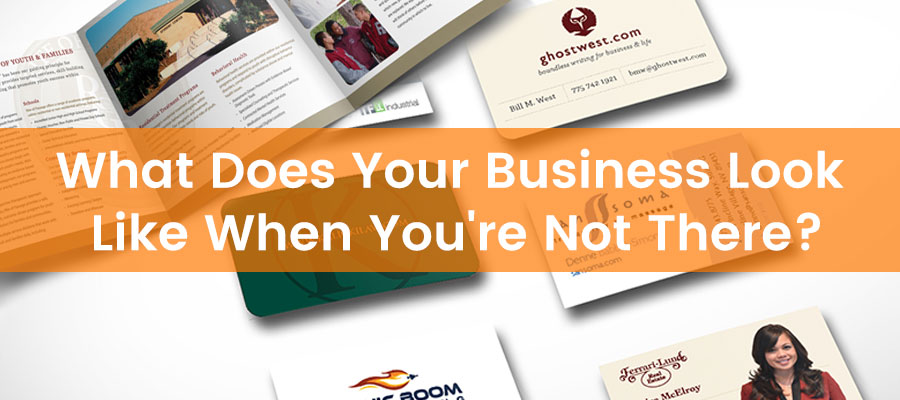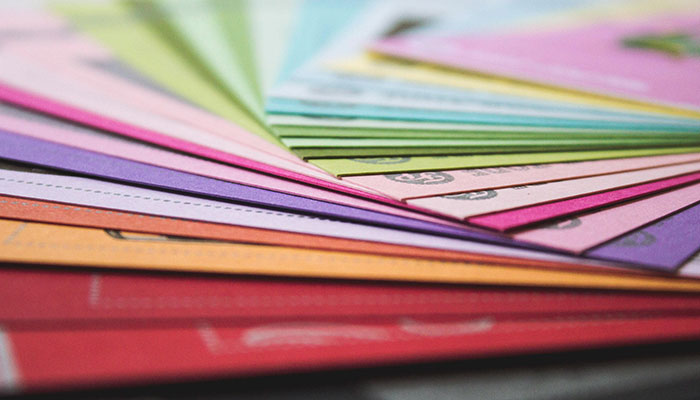 You did it! You finally opened that business you’ve been talking about for years. Now what? It’s the perfect time to make a great first impression. Often times businesses overlook the importance of the little things--business cards, flyers, brochures, posters, signs and the impact print marketing materials can have on the business. Think of what a great impression you make in person when sharing your excitement about your business. Now think about what your business looks like when you’re not there to represent it. Do your business cards leave a lasting impression like your meetings do? Does the post card you send out or the flyer you hand out look as professional and hip as your company really is? Taking time to create print collateral that represents your company image is as important as paying the electric bill. If your potential clients aren’t attracted to your print marketing pieces, then you’ve missed the mark.
You did it! You finally opened that business you’ve been talking about for years. Now what? It’s the perfect time to make a great first impression. Often times businesses overlook the importance of the little things--business cards, flyers, brochures, posters, signs and the impact print marketing materials can have on the business. Think of what a great impression you make in person when sharing your excitement about your business. Now think about what your business looks like when you’re not there to represent it. Do your business cards leave a lasting impression like your meetings do? Does the post card you send out or the flyer you hand out look as professional and hip as your company really is? Taking time to create print collateral that represents your company image is as important as paying the electric bill. If your potential clients aren’t attracted to your print marketing pieces, then you’ve missed the mark.
Print them in bulk and hand them out like candy. If you’re making excuses for your business cards, it’s time to rethink your approach. Add spot UV to a silk finish for a great looking, great feeling card.
Pick an uncommon size. If it looks like all the rest, it will get lumped with all the rest. Stand out! Try a square brochure or one with rounded corners.
Print on both sides and make sure to use lots of stunning photos and color. Black letters on neon yellow paper should be used for yard sales and school projects.
Having a retractable banner is handy to set up at trade shows, networking events and impromptu sponsorship opportunities. Create a visually spectacular banner with company info and be ready to dazzle any crowd. Hanging banners can be powerful as well and come in a variety of sizes: from small table banners to building banners that are temporary signs. Regardless of the size, make sure the presentation and message are well thought out.
Mail boxes get bombarded with junk mail. Make sure your mailer looks a cut above the rest and doesn’t get hidden behind all of the #10 envelopes. Find a size that stands out in the clutter and focus on eye-catching graphics and simple, powerful messaging.
The best signs are the ones that can be seen and read from long distances. Don’t clutter a sign with unnecessary info or graphics. Choose colors and lettering that that are easy to read any time of day. Your print collateral serves as your marketing, your lead generation tool, and represents your company brand. It also paves the way for your future efforts: website, social media, email marketing and internet marketing. So, take the time and effort to make sure that all of your collateral represents your business in the way you would in person. Are you a new business? OCG Creative can print all of your business collateral with a fast turn around. If it has a surface, we can brand it! We have curated many print marketing materials for a multitude of clients both locally and nationally. Contact us to learn more.

With over 15 years of print experience, Charles Driver, Print Manager of OCG Creative, weighs in on the importance of having quality print marketing materials that represent your brand in a professional light. I have to admit that I’m a bit of a printing snob. Whenever I visit a local place in Reno, the first thing I do is take a look at the print marketing pieces they have lying around. Whether it’s business cards, brochures, or menus—a few things instantly pop into my mind. I can usually tell a company’s marketing budget and how much importance they put on their branding just by looking at their print collateral.
First off, does the piece look like it was created in a bootlegged copy of some office writing program? It’s very easy to tell when a talented designer had a hand in a particular design. You may not even realize it, but behind the scenes, your brain is making assumptions about the design. Subconscious lines are being drawn and everything is measured against a Fibonacci sequence. Go ahead, give yourself credit, you know good design when you see it. It’s colorful, vibrant and draws your eye in just the right path across the surface of the material. A poor design, on the other hand, consists of a basic border around the page, a begrudging splash of color, and generic fonts—looking at you Times New Roman. Poor aesthetic sends a clear message: we spent no time designing this piece. How is this going to represent your business? At the end of the day, it pays to invest in a good graphic designer.
Let’s be honest, glossy paper has been out of fashion for a long time. Just like a car immediately depreciates in value when you drive it off the lot, so does any marketing piece printed on gloss. It loses its luster as soon you pick it up from the printer. Fingerprints and high glare are unattractive in the hands of your target audience. Choosing a matte dull paper type is classy, looks good in all lighting conditions, and leaves room for accents. Want to add a kick? Go heavy, everyone has basic printer paper laying around somewhere but there are other tiers to consider between basic and card stock. Handing out flyers? Try something in a 28lb. Giving out menus? 80lb book makes the presentation a tactile feast and prevents images from bleeding through on the other side.
A trend that is not entirely new, but certainly gaining more traction is using a spot UV coating to highlight certain elements of a printed piece. Spot UV simply means selective gloss coating, and a good designer will offer plenty of unique ways to use it. After discovering this option in printing a few years ago, I’m now seeing this subtle, yet enticing accent in everything I purchase, from merchandise boxes to book covers. While I do see Spot UV enjoying its time in the sun for many more years to come, if you want to get ahead of the curve try a satin or silk coating. If paper type can be considered a tactile feast, then you’ve just been invited to a fancy dinner with steak and lobster when you use satin or silk. While they’re still considered a matte finish, these two coatings have a striking visual quality that is matched only by how they feel in your hands. These pieces demand to be taken home. In the end, design is the first and possibly the most important step in your printing journey. What your piece says about you right now decides whether it gets tossed in the bin or hung on the fridge. Designing your piece for print should be a collaborative and engaging process. The design itself should speak to the overall purpose of that piece. If I’m wandering through your establishment, I’m certainly looking and making judgements about your brand.
Learn more about the printing services that OCG Creative can offer,